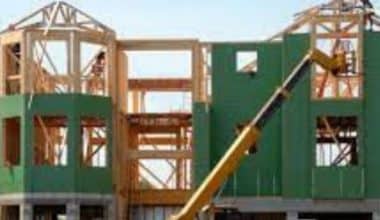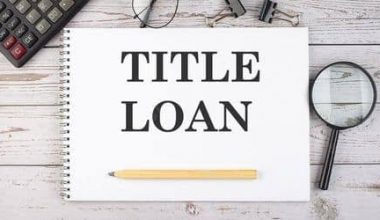When purchasing more than one investment property, it is usually preferable to go for a blanket mortgage, which is a single loan to pay for the acquisition of multiple real estate pieces, than singly applying for loans for each individual purchase. Now, Let’s discuss what a Blanket Mortgage is, and how it applies to real estate.
Overview
A blanket mortgage also known as a blanket loan, is a mortgage that covers a number of properties and uses them all as security. Instead of financing each property separately, you can finance several properties at once with a blanket mortgage.
A blanket loan can be used to buy several properties at once or to combine the loans for several properties into one. If any of the collateral is sold, only the amount attributable to the property sold is payable; the loan itself is not “called,” as this would force a refinancing or full payback. Therefore, the remaining sum of the loan continues as scheduled.
Blanket mortgages are not often available from traditional banks and lenders. Instead, commercial lenders are the main sources of these loans. They concentrate on seasoned real estate investors with intricate finances and a portfolio of many properties.
How Does Blanket Mortgage Work
Blanket mortgages simplify property financing. Real estate investments require big deposits. Personal savings may not be adequate for large-scale real estate operations. Thus, blanket mortgages are ideal for real estate finance. Developers buy and develop land to partition into residential units using blanket mortgages. This mortgage covers multiple lots. Real estate subdivision developments use this sort of funding. For a set sum, the borrower can discharge particular lots. The mortgage will pay for both lots while building progresses.
The buildings that will be built with this mortgage serve as security for the loan. However, blanket mortgages have rules that allow individual properties to be sold without fully paying off the loan.
A “due-on-sale clause” in conventional mortgages mandates full payment if the property is sold. A blanket mortgage’s “release clause” allows part of the security property to be sold and part of the debt paid back. After all homes are sold, the blanket mortgage is re-established. This makes buying and selling several residences with the same credit easier.
This clause, however, is only applicable if the value of the surviving property is sufficient to satisfy the balance of the outstanding loan when a property from a portfolio supporting a blanket mortgage is sold.
Blanket Mortgage Requirements
Lending institutions may also consider the following when determining a company’s general mortgage eligibility:
#1. Credit standing of the borrower
The borrower’s personal credit history and income will be taken into consideration by the blanket mortgage lender during the application process.
#2. The company’s financial stability
A debt service coverage ratio (DSCR) of at least 1.25x is required for the company to qualify for the loan in addition to the business earnings and credit history.
#3. Understanding of the industry
If the borrower intends to build a sizable project, this is essential. The blanket mortgage lender will want to know if the borrower has past experience because they are in a lot of danger in this circumstance.
#5. Strength of the asset
The lending institution will want to know how many properties are included in the loan, what kind of properties are included, what they are used for, where they are located, how they are maintained, and how much they are worth.
#6. Net operational income
If the loan is for rental properties, the banking company will want to know how much money the properties bring in each month.
Who Are Blanket Mortgages For?
Most of the time, smart buyers, flippers, and real estate developers use them. Companies in the business of purchasing houses in bulk or seasoned investors with a portfolio of residential or commercial properties are the target market for blanket mortgages.
These loans are not meant to be used for a second house or even a primary residence. Instead, they are made to serve as investment residences for real estate investors who rent, sell, or construct houses for profit. Some of the most typical clients for a blanket mortgage include:
#1. Investors in Rental Properties
Rental property investors typically face borrowing restrictions from conventional lenders. A blanket loan can be used to purchase several properties at once or to combine loans on existing rental properties into a single loan.
#2. Property Flippers
Property flippers can buy a number of real estate at once to resell by using a blanket loan. The flipper just needs to repay that percentage of the loan for each sold property. For instance, flippers may look for blanket mortgages to enable them to move rapidly and seize chances they spot in the market. A blanket mortgage might provide additional flexibility to make such operations more feasible if the investor discovers many homes they want to buy, renovate, and resell.
#3. Builders and Developers
Real estate developers can buy land and pay for building construction with a blanket mortgage as well. If the developer agrees to keep the loan, it becomes permanent funding; otherwise, it can be repaid as the developer sells properties.
#4. Business Expansion
A blanket loan offers to fund all the buildings under one mortgage, which is useful for companies that are expanding or purchasing one with many locations.
Blanket Mortgage Real Estate
In short, blanket mortgage real estate is the system of financing various real estate projects and acquisitions using a blanket loan. This also provides the option of combining several individual real estate mortgages under a single blanket loan. Since blanket mortgages are quite flexible and allow for individual assets to be sold separately, without any need for refinancing or obtaining a new loan, they are usually acquired by real estate investors and developers to save time and money when financing multiple assets or commercial and residential properties.
Take this scenario for instance. A developer buys 100 acres of property with the intention of developing a suburban neighborhood with one home per acre. They buy the land from various sellers using a blanket loan. They sell houses to specific families as they build and pay off a portion of the loan with each sale.
Blanket Mortgage Lenders
Requesting recommendations from your banker, CPA, or financial advisor is the easiest approach to locating a commercial lender who provides blanket mortgages. However, here are a few mortgage lenders you may also want to consider:
#1. Vaster Commercial lending:
Vaster, is a fully integrated mortgage organization with local market experts as its backbone. It was established in 2017 by two of the largest real estate firms in South Florida; Fortune International Group and The Related Group. It was formed as a joint venture. In its first two years of operation, as a residential private lender, Vaster closed on more than $150,000,000 in loans. Since then, they’ve increased the variety of loan products they provide to keep assisting more people in accumulating wealth through real estate.
Vaster is situated in Miami, Florida’s Brickell, the city’s financial center, and can provide a seamless mortgage experience to clients from the United States and other countries due to the favorable location of their headquarters.
Vaster specializes in large-scale and complex commercial transactions with up to 65% financing and no maximum loan amount on a 12 – 36 month agreement for both commercial and residential loans.
#2. KRAM Capital
When it comes to commercial and residential real estate financing, few companies can compare to KRAM Capital Group LLC. Due to their worldwide presence, KRAM clients can access funds for commercial and residential real estate investments everywhere. Their headquarters is located in Atlanta, Georgia.
The leadership team’s 20 years of commercial and residential financing experience and $2 billion in transactions help clients. Since 2017, KRAM Capital Group has been delivering exceptional service and online tools to give each customer a unique experience.
KRAM Capital provides funding to real estate investors of all sizes including; commercial real estate, multifamily properties, residential investment, bridge loans, and vacation rentals with loan amounts beginning at a minimum of $300,000 and a 5 – 30 year fixed loan term.
#3. Westpark Loans
California-based Westpark Loans is a direct hard money lender operating on a national scale. They provide every kind of mortgage, including hard money, government, alternative documentation, and conventional loans.
Located in Irvine, California in the US, Westpark Loans offers 2 different products, under the blanket loan system. They are the Standard Investor blanket loan and the Apartment Investor blanket loan.
Under the Standard Investor Blanket loan option;
- Loan amounts range from $500,000 to $5 million
- Cash-out refinancing is acceptable
- 5 or 10-year fixed terms with amortization of up to 30 years
Under the Apartment Investor Blanket loan option;
- Loan amounts range from $1 million to $50 million
- Cash-out refinancing is also acceptable
- 5 or 10-year fixed terms with amortization of up to 30 years
Blanket Loan vs Bridge Loan
Despite the fact that both are commercial real estate loans there are a few differences between them.
A bridge loan is a brief loan created to offer funding during a period of transition, like moving from one home to another, whereas a blanket loan, is a single mortgage that covers two or more pieces of real estate.
Bridge loans are mostly used by single homeowners looking to move to a new home or renovate and sell their old home, while blanket loans are mostly preferred by real estate developers and investors developing a large number of properties simultaneously.
Bridge loans have a higher interest rate ranging from 6.25% and above and are relatively short-term loans typically to be repaid within 6 months to 3 years, while blanket loans have much lower interest rates up to 4% with loan terms ranging from 2 to 30 years.
Real estate investors can sometimes use commercial bridge loans, which are short-term loans until they can secure long-term funding. When renovating a recently purchased income property, bridge loans are frequently employed; after the improvements are finished, the property becomes eligible for permanent financing. Additionally, Commercial bridge loans may be utilized to buy land that hasn’t been built yet or to refinance business assets.
Pros and Cons of Blanket Mortgage
These are the major pros and cons of blanket mortgage:
Pros
- A borrower with a blanket mortgage may save more money because there is only one loan to pay fees on. This gives the real estate owner more money to invest in the project. So, the costs for a real estate trader to apply for and close on several mortgages are less.
- These loans allow investors and borrowers to consolidate multiple properties under one loan. This saves a lot of time, energy, and money. Additionally, because there is only one loan application, they save a ton of paper as there is only one set of financials, one credit inquiry, and one application to complete.
- Following loan approval, borrowers will only have one loan payment per month to manage and keep track of and one monthly statement to update in the borrowers accounting.
- The sale of a single asset triggers repayment of only the amount of the loan’s balance attributable to that asset. If the blanket loan property is paid off, it can be sold without affecting the outstanding debt.
- Blanket loans can be used to purchase as many properties as the borrower wants.
Cons
- Because they are uncommon, blanket loans are not simple to obtain.
- Qualification requirements are generally way more demanding as their terms tend to be different from traditional mortgage loans.
- Some borrowers may find it challenging to make the larger down payments that blanket mortgage lenders occasionally demand, ranging from 25% to 50%, in addition to the high loan amounts which blanket loans typically come with when compared to conventional mortgage loans.
- In contrast to conventional mortgages, the conditions of the loan may change, and if it is defaulted upon, all of the assets secured as collateral may be lost.
What Is an Example of a Blanket Mortgage?
Say a real estate developer wants to build a suburban subdivision with one home per acre on 100 acres. The developer could either buy the land using a blanket loan or finance the individual home construction with the blanket loan and pay off the loan gradually with each house sale.
Is It Difficult to Get a Blanket Mortgage?
For regular individuals, it would be quite difficult to acquire a blanket loan whereas, for experienced investors such as real estate companies and investors, the tendency increases.
How Does a Blanket Mortgage Work?
A blanket loan is a type of loan that basically enables the borrower to repay the loan by selling the secured property in segments.
See Also BLANKET LOAN: What It Is and How To Use It
Conclusion
Blanket loans or mortgages are loans that cover multiple real estate assets and make it possible for investors to get financing for multiple properties at once, rather than having to take out a number of single individual mortgages. The property for which the loan is taken out serves as collateral for the loan. A release clause lets the property sell individually without having to pay off the whole debt.
The main value of this finance model is that it allows for more cash in hand for the borrower. Blanket loans are primarily requested by developers, real estate investors, and flippers who build large commercial or residential properties.
Blanket Mortgage FAQs
What is the collateral in a blanket mortgage?
The real estate is the collateral for the mortgage.
What does a blanket mortgage cover?
A blanket mortgage covers two or more pieces of assets or real estate.
Are blanket loans Safe?
Blanket loans are safe as long as the borrower does not default on mortgage payments.
- HOW MANY MORTGAGES CAN YOU HAVE: REAL ESTATE INVESTING
- BRIDGE LOANS: A Comprehensive Information about Bridge Loan
- What are the Most Expensive Shoes in the World?
- Best 2023 CREDIT CARDS WITH 0 INTEREST for 18 Months
- ENCUMBRANCE IN REAL ESTATE: DEFINITION & HOW IT WORKS
- Purchase Order Process: Types, Examples & Format
- COLLATERAL LOAN: Meaning & What You Need to Know






